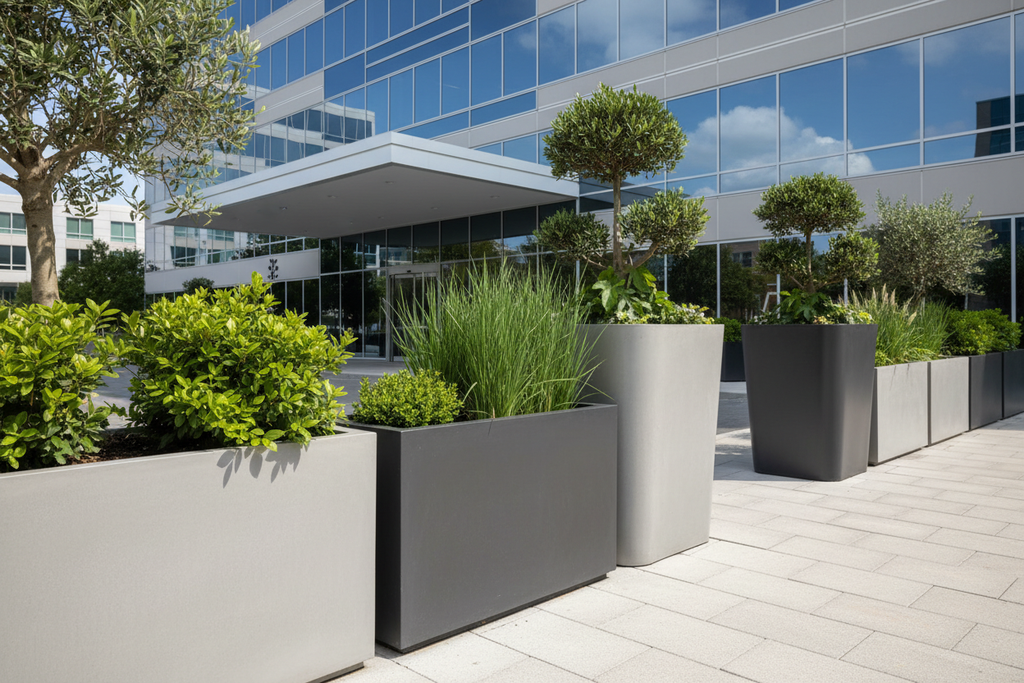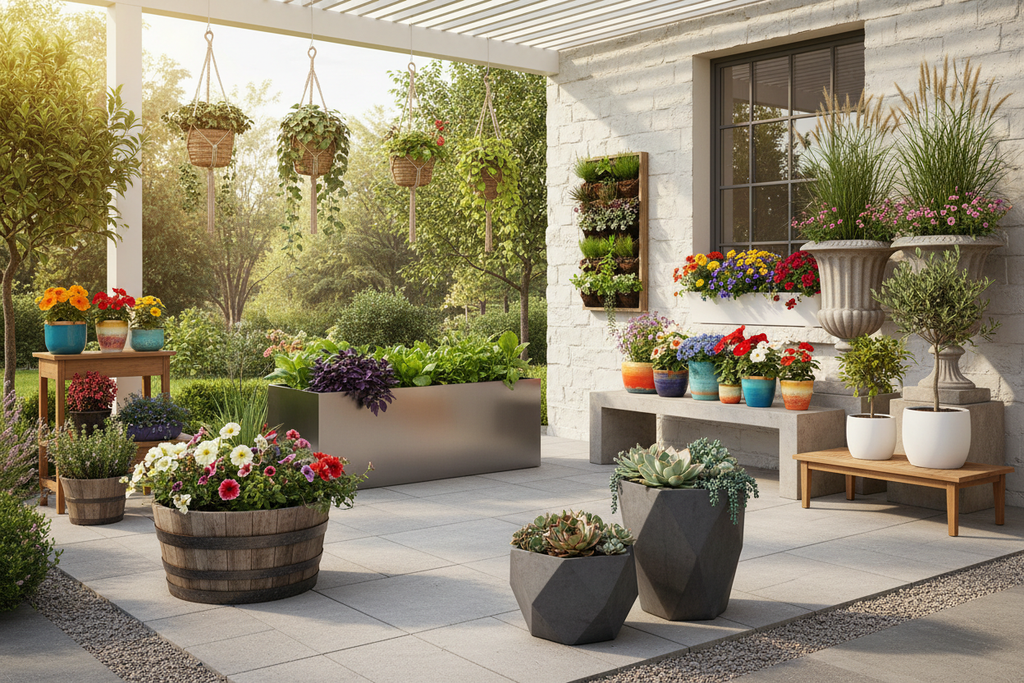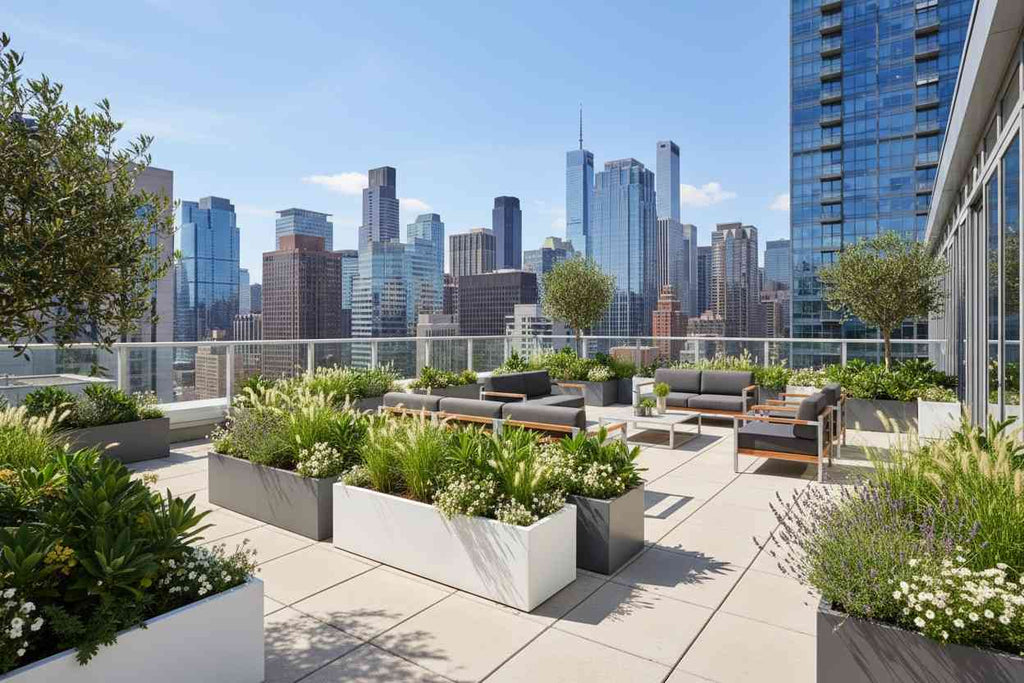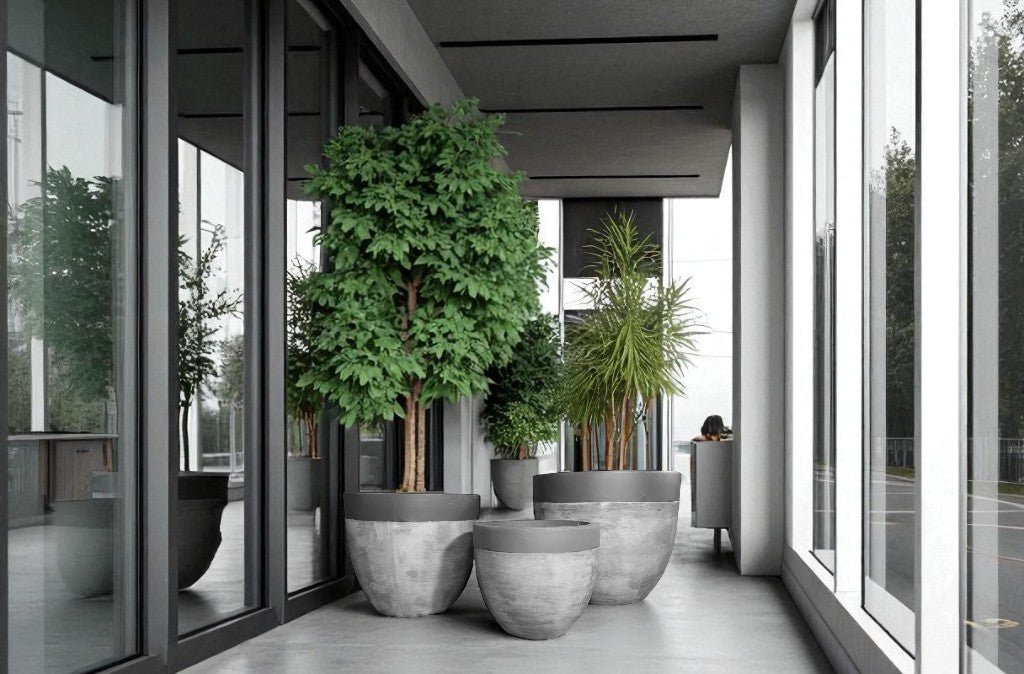
Concrete vs. GFRC vs. Metal Planters: Which Is Best for Outdoors?

When it comes to designing a beautiful outdoor space, material choice is what separates a short-lived setup from a lasting one. The right planter material determines not just aesthetics but also longevity, maintenance needs, and overall plant health.
Among the most popular materials for outdoor planters In Canada are Concrete, GFRC (Glass Fiber Reinforced Concrete), and Metal. Each offers distinct strengths from rustic charm to modern minimalism making it important to choose one that fits your environment and design goals.
Material Overview
Before diving deeper, here’s a quick overview of what makes these three planter materials stand out:
|
Feature |
Concrete |
GFRC |
Metal (Iron, Aluminum, Steel) |
|
Weight |
Very heavy |
Lightweight |
Moderate |
|
Durability |
High but brittle |
Extremely high |
Moderate–High |
|
Maintenance |
Medium |
Low |
Medium–High |
|
Cost |
Affordable |
Mid-range |
Variable |
|
Ideal Style |
Rustic, antique |
Modern, contemporary |
Industrial, sleek |
Concrete is loved for its traditional and timeless charm, GFRC for its advanced strength and lightweight versatility, and Metal for its modern, architectural edge.
Explore our modern planter outdoor options and antique outdoor planters to see how each material enhances your design style.
Concrete is loved for its traditional and timeless charm, GFRC for its advanced strength and lightweight versatility, and Metal for its modern, architectural edge.
Explore our modern planter outdoor options and antique outdoor planters to see how each material enhances your design style.
Concrete Planters
Pros of Concrete Planters
Concrete planters are classic and enduring, perfect for creating a permanent, grounded feel in any garden. Their weight ensures stability, even for large trees or top-heavy plants, and their texture blends beautifully with antique or stone-inspired designs.
-
Strong and stable for large plants
-
Timeless, antique-friendly look
-
Resistant to wind and tipping
Cons of Concrete Planters
The downside? Their weight makes them difficult to move, and they can crack under severe freeze–thaw cycles. Without sealing, moisture can seep in over time.
-
Very heavy and not easily portable
-
Can chip or crack in extreme weather
Best Use Cases
Perfect for gardens, patios, and permanent installations, especially where weight isn’t a concern.
Explore more concrete outdoor planters designed for durability and classic appeal.
GFRC (Glass Fiber Reinforced Concrete) Planters
Pros of GFRC Planters
GFRC planters take concrete to the next level. Reinforced with glass fibers, they’re lightweight, crack-resistant, and weather-proof, making them ideal for modern homes and commercial settings. Despite their lighter weight, they retain the visual solidity of stone or concrete.
-
Lighter than concrete but just as strong
-
Crack- and weather-resistant
-
Can mimic stone, metal, or matte modern finishes
Cons of GFRC Planters
GFRC is slightly more expensive than standard concrete, but its longevity and low maintenance make it a worthwhile investment.
-
Higher upfront cost
Best Use Cases
Perfect for balconies, terraces, or sleek modern patios, where weight and appearance both matter.
Check out our GFRC planters and modern planter outdoor designs for inspiration.
Metal Planters (Iron, Aluminum, Steel)
Pros of Metal Planters
Metal planters add an industrial and minimalist aesthetic to outdoor spaces. Aluminum models are lightweight, while iron or steel versions offer strong, contemporary appeal. With proper coating, they can withstand years of outdoor exposure.
-
Sleek, modern look
-
Highly durable with protective coating
-
Lightweight (especially aluminum)
Cons of Metal Planters
Their main drawbacks include heat retention and potential rusting if coatings wear off. Plants with delicate roots may need extra insulation during summer months.
-
Can overheat in direct sunlight
-
Prone to rust if not maintained
Best Use Cases
Ideal for urban balconies, patios, and minimalist gardens that need structure and style.
Explore our sleek collection of metal outdoor planters.
Comparative Analysis: Which One Should You Choose?
Each material shines in its own way but your choice should depend on space, weather, and style.
|
Factor |
Best Option |
|
Durability |
GFRC > Concrete > Metal (if uncoated) |
|
Weight & Mobility |
GFRC or Metal |
|
Maintenance |
GFRC (low) > Concrete (medium) > Metal (high) |
|
Style Flexibility |
GFRC & Metal → Modern / Concrete → Antique |
If you want something long-lasting, low-maintenance, and visually versatile, GFRC planters are the clear winner. For classic charm, concrete remains timeless. And for an edgy, modern feel, metal planters deliver unmatched contemporary style.
Explore modern and antique outdoor planters to find your perfect match.
Tips for Longevity Regardless of Material
No matter which planter material you choose, these practices help extend its life and beauty:
-
Ensure proper drainage holes to prevent water damage
-
Avoid dragging heavy planters - lift or use trolleys
-
Apply protective coatings annually
-
Clean seasonally to remove buildup or rust
For more ideas on maintaining durable outdoor planters or applying 3D-coated planters finishes, explore our care guide section.
When comparing Concrete, GFRC, and Metal planters, each has its purpose — but for the perfect balance of durability, weight, and design versatility, GFRC wins hands down. It’s built to withstand harsh climates, look elegant for years, and adapt to any modern or contemporary space.
If you’re creating a garden that blends strength with beauty, choose wisely.
Discover handcrafted outdoor planters from classic concrete and elegant metal to premium GFRC planters that redefine outdoor design.



































